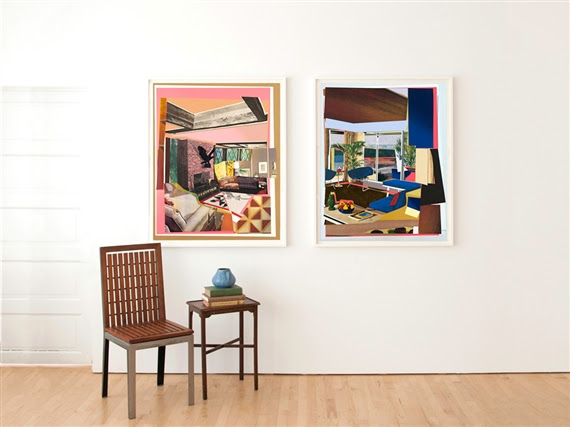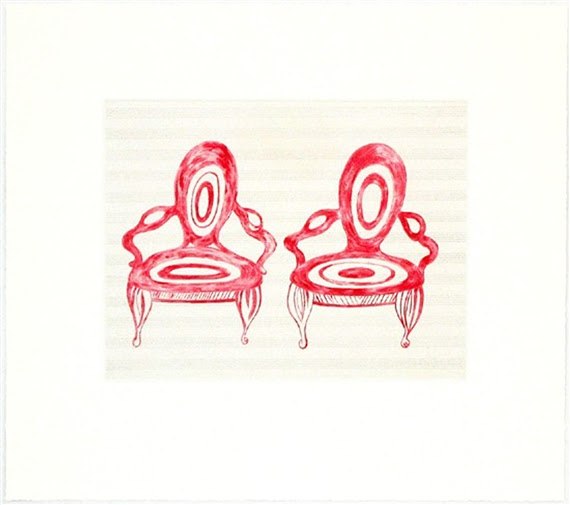정준모
How to Collect Prints
Prints are one of art's most affordable collecting categories. We spoke to Michele Senecal, Executive Director of the International Fine Print Dealers Association (IFPDA), who shared her expert tips with buyers.
There’s a type of print for everyone
The number of techniques that come under the prints umbrella can be dizzying. Each creates a unique look and feel and, while some artists explored many, others have become renowned as specialists in one type. Woodcut is one of the oldest forms, created by applying ink to an image carved into a wooden surface. Other techniques include etching, favored by artists including Rembrandt, and lithography, which was regularly used by Picasso. Senecal explains: “I’ve seen so many interesting ways in which artists have used the medium, and am endlessly fascinated by their invention.”

Left: Mickalene Thomas, Interior: Fireplace with Blackbird, 2016. Mixed Media Collage: Screenprint, Woodblock, Digital Print, Etching, Gold Leaf, Wood Veneer, and Flocking, 42 3/8 x 34 1/4 inches(107.6 x 87 cm). Edition of 26, $17,000. Courtesy of Durham Press. Right: Mickalene Thomas, Interior: Blue Couch and Green Owl, 2016. Mixed Media Collage: Screenprint, Woodblock, Digital Print and Flocking 42 3/8 x 34 1/4 inches(107.6 x 87 cm). Edition of 26, $17,000. Courtesy of Durham Press.
Look for museum-quality work
For Senecal, the joy of prints lies, not just in the enormous variety of techniques used to create an image, but in the opportunity to collect works from editions featured in leading institutions. “The mulitiplicity of prints allows me to own a work from the same edition that a museum may have purchase for their collection. There’s a thrill to feeling that you’ve chosen well.”
… and don’t shy away from big names
While a painting by the latest big-name contemporary artist might be out of reach at auction, smaller prints by the same name can sell for considerably less — allowing buyers to add the world’s top names to their collection for a fraction of the price. “At this year’s fair, Brigitta Laube has a very small, very rare wood cut by Gauguin,” says Senecal. “I am also a great fan of Lucien Freud and Mary Ryan has a very intimate and delicate early etching that is considered to be his most important. There are also scores of new editions I’ve been waiting to see. Mel Bochner, Leonardo Drew, Swoon, Etel Adnan, Peter Doig, Michalene Thomas, Alex Katz are just a few artists who have new works at the Fair.”

Lucian Freud, Ill in Paris, 1948. Etching, 5 x 7 inches. Courtesy of Mary Ryan Gallery, New York
No signature? Don’t disregard the work
If you’ve fallen in love with a ㅓㅂprint but can’t spot a signature, don’t disregard it or automatically assume it’s fake. Some of the most renowned artists in history chose to leave prints unsigned, explains Senecal: “Picasso was famously idiosyncratic about when and whether he would sign his prints.” Speak to an expert to confirm why the work doesn’t have a signature, and whether there’s an impact on value. “This is one of the instances where it’s essential to talk to an expert dealer,” she continues, “they have studied the artists they represent in depth and know exactly what they did in practice.”
Visit fairs and museums to discover new prints
Seeking inspiration but unsure where to begin? An increasing number of art fairs across the world offer sections dedicated to prints, or focus solely on the genre. Leading examples include the London Original Print Fair, held annually at the Royal Academy of Arts, as well as the Affordable Art Fair, which features prints prominently in its iterations globally.


FAMILY SITE
copyright © 2012 KIM DALJIN ART RESEARCH AND CONSULTING. All Rights reserved
이 페이지는 서울아트가이드에서 제공됩니다. This page provided by Seoul Art Guide.
다음 브라우져 에서 최적화 되어있습니다. This page optimized for these browsers. over IE 8, Chrome, FireFox, Safari